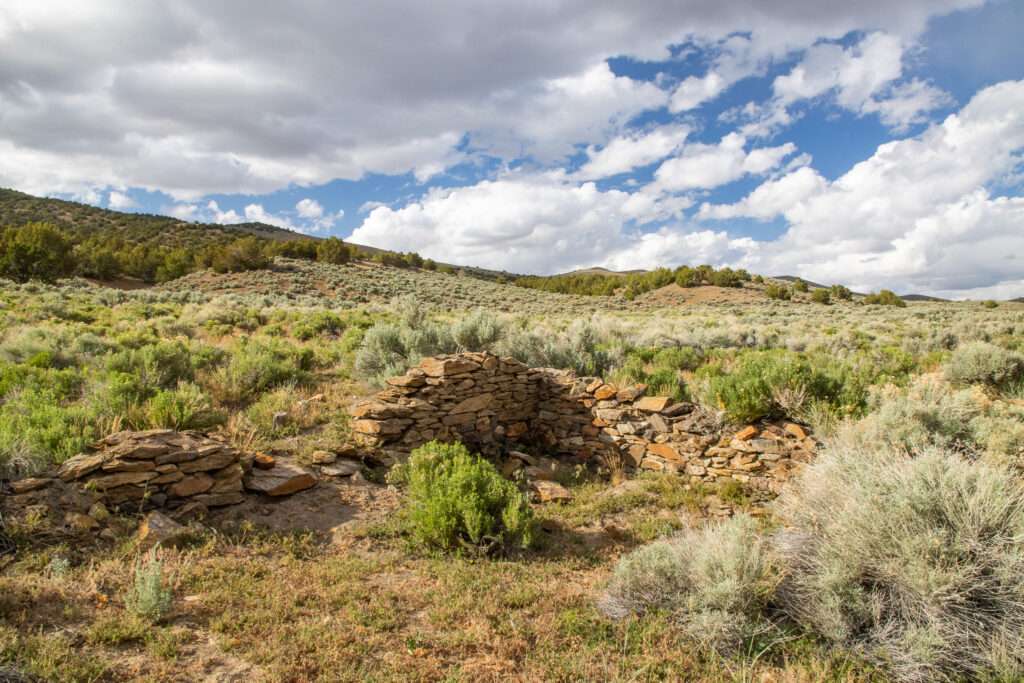
The ghost town of Dun Glen was one of the largest towns in Northern Nevada. In addition to mining, the town was a regional supply center. Conflict is a way of life, and Dun Glen had its share, including thefts, fights and hostilities with Native Americans.
Sadly, Dun Glen will be remembered for a conflict between modern mining and history… leaving a family’s final resting place less than final.

Dun Glen
Dun Glen was established in 1862 following the discovery of silver. D.P. Crook was among the first settlers, but the town was named in honor of Agnus Dun or Dunn. The town was also known as Dunn Glen, Dunglen, and Derbys Dun Glen.

(Photo credit: Wikipedia)
The settlement became one of the largest towns in northern Nevada, with a population of two hundred and fifty. Dun Glen was the region’s business and supply center and had stores, saloons, hotels, a post office, a school, a meeting hall, and outhouses described as “very airy.”
A post office opened on July 18, 1865.

Dun Glen had routine stage service to Unionville and Mill City, where travelers could connect with the Central Pacific Railroad.

The Sierra Mining District
The Sierra Mining District was organized in 1863. By 1870, it had three stamp mills, and the Sierra District was one of the most productive districts in Nevada. An estimated $4 million was extracted in gold and silver. Many of the miners in the district were from China.

(Photo credit: Nevada Magazine)

Newspapers across Nevada were filled with articles about the Dun Glen Mines.








Drama at Dun Glen
While mining was the focus of Dun Glen, town life held its share of drama.
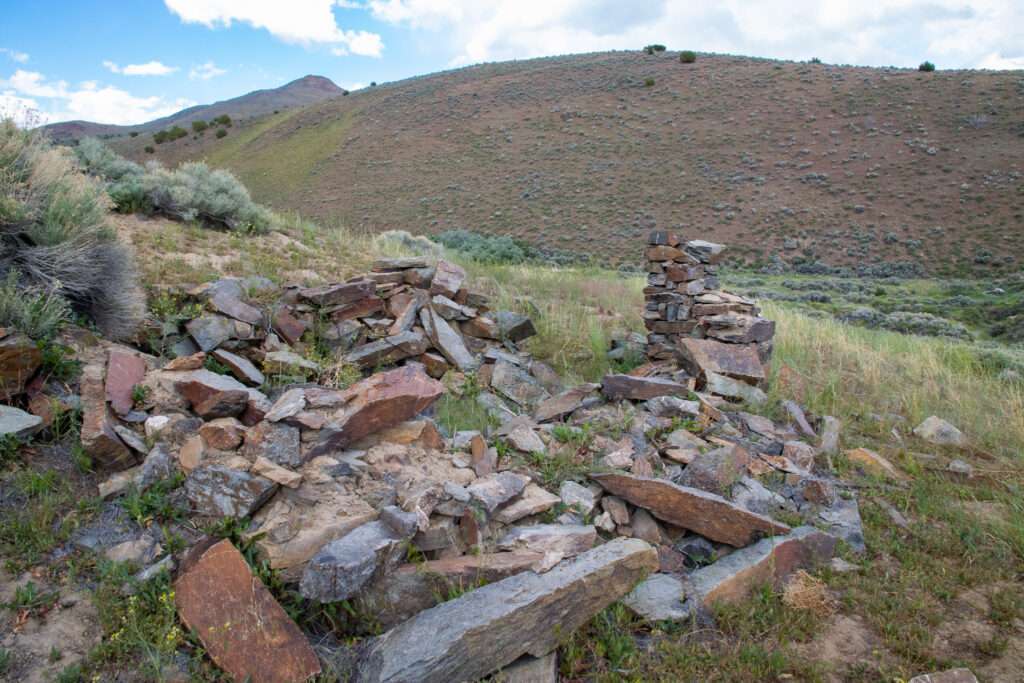
Mr. Hamblyn’s “accident”
Poor Mr. Hamblyn broke his leg after he wisely tried to avoid a wrestling match with a large man. The instigator kicked Mr. Hamblyn, resulting in a compound fracture; ouch!

Honest Miner, accused of theft, gets the last laugh
“Honest Miner,” Johnny Coon, was accused of theft before he even woke for the day. A stranger at the boarding house accused Coon of stealing $180. Officer Pryor was called out and searched the accused. Not finding the money on Mr. Coon, he turned and searched the stranger. Finding the money, Mr. Coon then started proceedings against the stranger.
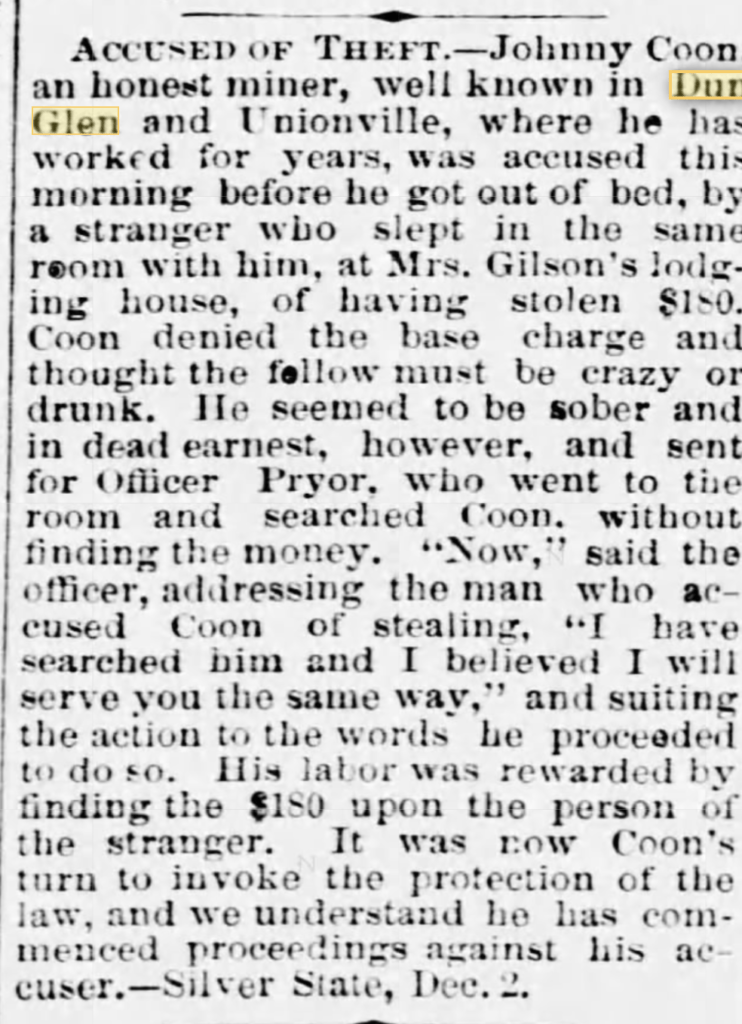
The wind is always news in Nevada
One thing you can count on in Nevada is talking about the wind. C.H. Stoddard departed his Dun Glen mine on a fine morning, hitting a localized wind storm three miles out of Winnemucca.

A “ludicrous mistake”
Mr. Moore believed tramps had pillaged his cabin, so he grabbed his shotgun and searched for the despoilers. Spotting a rider, he pulled his firearm and called for the man to stop. The unsuspecting Mr. Lewis, thinking Moore was a highwayman, fled, “putting spurs to his horse, galloped out of range.” After clarifying each others identities, the two met halfway and had a good laugh over their ludicrous mistake. I hope Moore at least bought Lewis a drink.

Camp Dun Glen
In 1863, residents of Dun Glen requested military protection against Native Americans. A small garrison, Company B, 2nd Cavalry Volunteers, under the command of Colonel Edward McGarry of Camp Union, near Sacramento, was established six miles from Mill City.

(Photo credit: Wikipedia)
Protection was again requested in June 1865, and troops reoccupied the campsite. The garrison was commanded by 1st Lieutenant R.A. Osmer and briefly by Captain George D. Conrad.
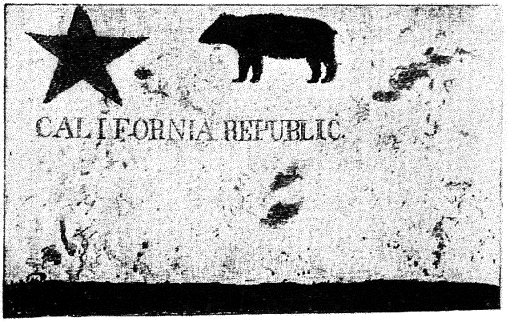
(Photo credit: Museum of the City of San Fransisco)
Camp Dun Glen also served troops protecting the region. The Cavalry scouted the region, focusing their efforts on the overland routes.
Scalper & Savior
Former Wells-Fargo detective and military scout Thacker served at Camp Dun Glen as a scout under Captain Conrad. In 1909, Thacker recounted the story of a battle with Native Americans.

(Photo credit: AAA Native American Arts)
After Thacker located the Paiute Camp, soldiers set out coming on the camp at the morning meal. Twenty Paiutes were killed, with not a soldier injured.
Captian Thacker on that occasion secured four Indian scalps which he added to his beltand in a way made the Indians fear him more than they ever had before.
Reno Gazette-Journal, January 5, 1909

(Photo credit: Utah American Indian Digital Archive)
While Thacker “hated an Indian more than poison,” he would not allow children to be killed. He saved the children by bringing them to his ranch in Dun Glen. Thank you to Nevada Ghost Towns and Mining History for connecting this event to Black Rock Tom and raids on settlers around Dun Glen.
Camp Dun Glen was abandoned in August 1866.
The end of Dun Glen, Part I
Mining declined by 1880, and Dun Glen’s population diminished to fifty residents, but the town continued to serve ranches. The post office closed on September 23, 1887, reopening on March 13, 1888. Mail delivery continued until April 7, 1894, when service transferred to Mill City.

Chafey
In 1908, additional silver deposits were discovered around Dun Glen. The reborn town was named after E. S. Chafey, owner of the Chafey Mine.

(Photo credit: Wikipedia)
Chafey surpassed Dun Glen, with a population of one thousand, four times the size. Chafey was awarded a post office on August 4, 1908. It operated for three years before the name was changed back to Dun Glen on March 4, 1911.

(Photo credit: American History and Geneology Project)
While Chafey was a bigger town, it was shorter-lived. Mining ended in 1913, and the town once again declined. The post office closed for the final time on April 15, 1913.

And the mining goes on
Dun Glen continued to be mined sporadically into modern times with active periods in the 1930s, 1940s, 1980s, and 2003.
Dun Glen Cemetery
Sadly, sometimes history and modern mining collide.

I see the sign
I struggled to decide which town to research next. Nothing seemed to jump out, and I spent an inordinate amount of time staying blankly at my monitor or scrolling aimlessly through Facebook.
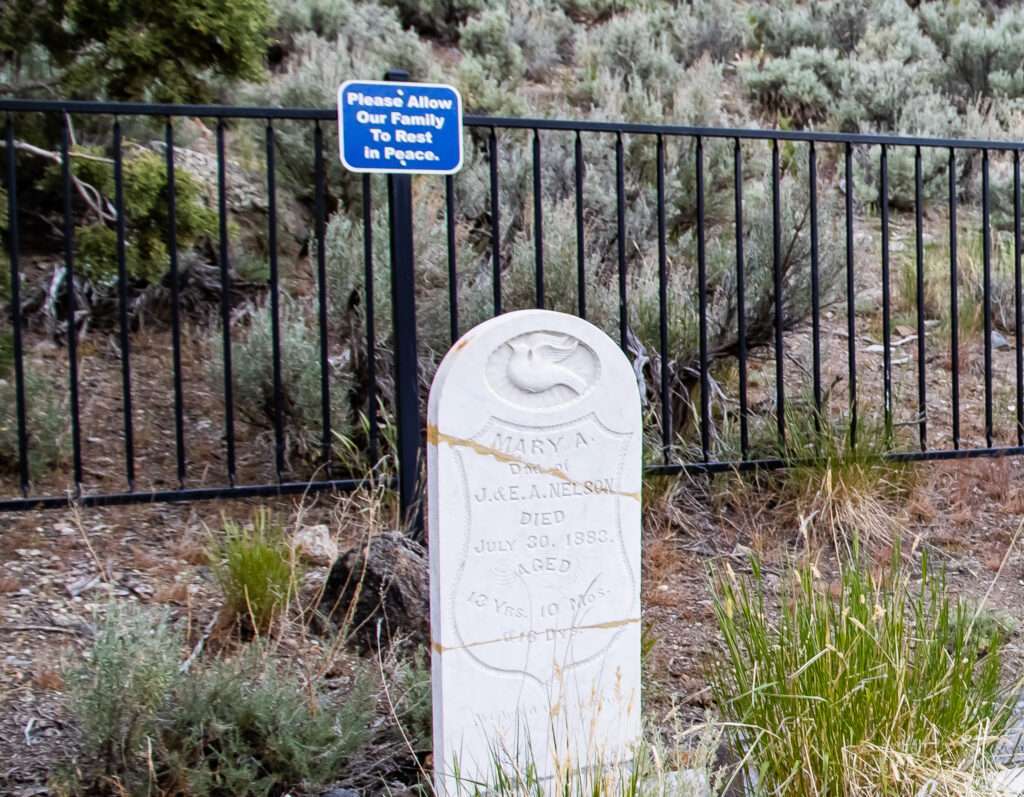
I was trying to finish the travel update for my Winnemucca trip and was not really into it. I worked in a ghost town at a time. Much like McKinney Tanks from my Tonopah trip, a story jumped at me. It might as well have had neon signs saying, “write this.”

The Dun Glen Cemetery is a distance from the ghost town. Trying to photograph the cemetery with the impending storm, a modern sign kept getting in my way. I tried to shoot around it, but it sat right behind the large headstone.
Please allow our family to rest in peace.
Dun Glen Cemetery
I visit a lot of cemeteries. Not every ghost town has a cemetery or a cemetery that can be located. But any town with a substantial population has one. I have never seen a sign like this and thought there might be a story.

The tale and journey of the Nelson family’s graves are a sad reflection on the mining industry. In 2003, a mining company received permission to relocate the grave of thirteen-year-old Mary A. Nelson so they could mine the land. When the company exhumed the grave, three additional burials were discovered: Mary’s parents, Eliza and John Nelson, and an unknown person.


(Photo credit: Find a grave)
Instead of reinterring the family, the company placed the remains in makeshift coffins. For two years, the coffins were left unsheltered above ground.

Bureaucratic issues and allegations of illegal disposition of the graves delayed relocating the cemetery. The Nelson family and unknown remains, possibly Vance Nelson, were reinterred in October 2005.

Sadly the tale is not over. In 2014, Mary’s headstone was intentionally damaged, likely in an attempt to steal it.
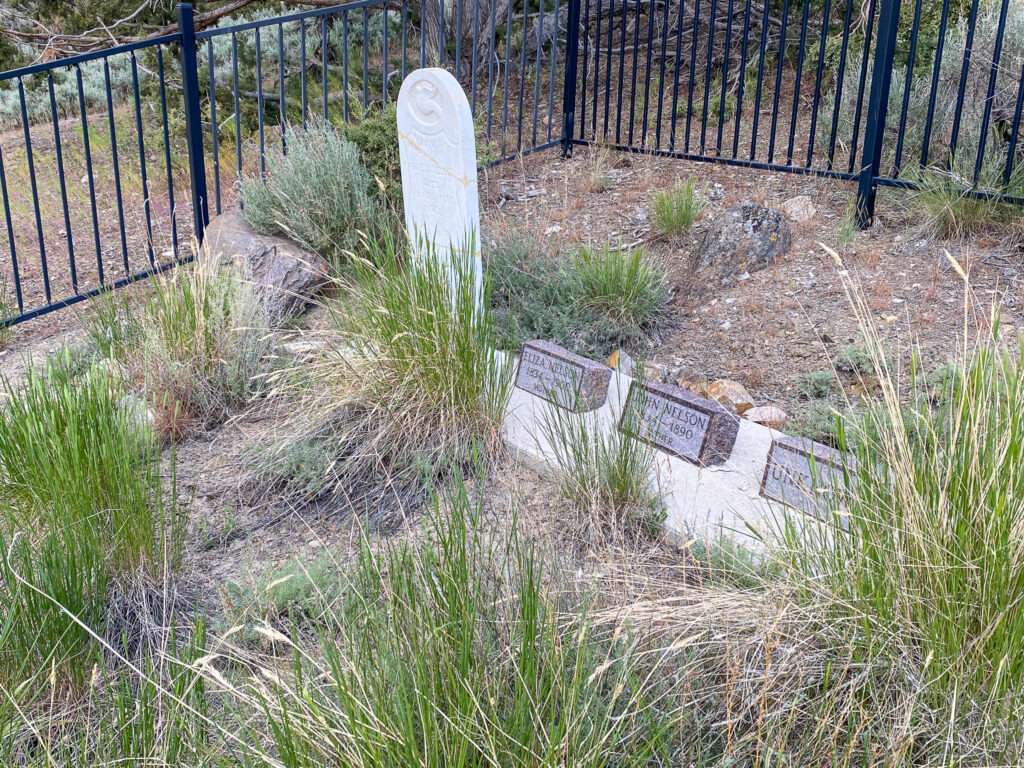
A new memorial for Jimmy Garst was paced inside the cemetery fence. It appears Jimmy was a “neighboring landowner,” and his family may have leased the Dun Glen mines. From his Facebook account, he appears to have an interest in mining. His last post was in 2019.

Once the largest town in the region, Dun Glen was an active and vital town with its share of drama. Dun Glen survived several mining declines but eventually succumbed to becoming another Nevada Ghost Town. Mining continued into modern times, causing its share of drama which took years to resolve. At last, the Nelson family is in their final resting place, together for eternity.
Want more ghost towns?
For information on more than five hundred ghost towns in Nevada & California, visit the Nevada Ghost Towns Map or a list of Nevada ghost towns.
References
- American History and Geneology Project: Chafey Camp, Nevada
- Angel, Myron. History of Nevada. Thompson and West, 1881. Page 57.
- Carlson, Helen S. Nevada Place Names: A Geographical Dictionary. University of Nevada Press, 1974. Page 102.
- The Diggins: Dun Glen Gold Mine
- Find a Grave: Dun Glen Cemetery
- Gamett, James and Stan Paher. Nevada Post Offices: An Illustrated History. Nevada Publications, 1983 Page 50, 58.
- Investors Hub: Mining Company Research Board
- Nevada Bureau of Mines and Geology: Scanned Mining District Files
- Nevada Expeditions: Dun Glen
- Nevada Ghost Towns and Mining History: Dun Glen
- Nevada Magazine: The rise and fall of Reno’s Chinatown
- Nevada State Journal: Mines around Dun Glen are shipping ore. July 9, 1934.
- OHV Nevada: The Dirt: Dun Glen
- Paher, Stanley. Nevada Ghost Towns and Mining Camps. Nevada Publications, 1970.
- Paher, Stanley. Nevada Ghost Towns and Desert Atlas. Nevada Publications, 2009. Page 35.
- Reno Gazette-Journal: Thacker and Richardson tell of early Indians. January 5, 1909.
- Reno Gazette-Journal: Suit over three richest claims in Chafey. January 6, 1909.
- Roberts, Robert B. Encyclopedia of Historic Forts: The Military, Pioneer, and Trading Posts of the United States. Macmillan Publishing, 1988. Page 491.
- Shamberger, Hugh A. Rochester: Early History, Development, Water Supply. USGS, 1973. Page 2.
- Tonopah Daily Bonanza: Big suit is on over rich Chafey Claims. January 8, 1909.
- USGS: Dun Glen
- USGS: Dun Glen Mine Project
- Weekly Independent: Silver State 16th
- Wikipedia: Dun Glen, Nevada

BILL KULICK says
ELLANCE STORYS LOVE READING YOUR WORK PLEASE KEEP IT UP THANK YOU, BILL KULICK I WANT TO GET OUT THER ONE MY SELF
Tami says
I am already working on my next article, this time it will be Eureka area.
And the next trip is planned starting tomorrow! I hope you get out too.
terry says
story looks like the many problems i’ve seen, profit over people and red tape over common sense.
Tami says
That is often the truth.
Alice E Gutshall says
I had the chance to visit Dun Glen the end of July 2023. I felt a very peaceful ease when there. It was a wonderful two nights camping with the Mormon crickets and cows.
I was saddened to see that the Dun Glen Mining Co was out cutting down trees and doing surveys of the hillside across from our camp. It is such a shame to see such a beautiful place with a rich history being destroyed by those trying to get rich. On our way to Winnemucca going out the “back” way, we were also saddened to see the historic fort site used as a painting post for graffiti artists. Do people have no sense or concern for American history?
I hope to be able to visit again and explore more before there is nothing left of the historic town site.
Tami says
Interestingly, I recently spoke to the owner of Dun Glen. I didn’t know it was private. They had no trespassing signs but gave up as everyone tore them down.
I would happily camp there, it is a beautiful spots. Minus the Mormon Crickets!
It is sad how much history has been destroyed, I think more since Covid. More people are outside but they aren’t respectful. When I speak I always talk about stewardship.
Valerie Nelson says
Thank you for researching and writing this article! It’s very interesting to read about the history of Dun Glen and see all the photos that you included. Around 2010 my family was contacted by two men who had happened upon our family’s open caskets in the Dun Glen area. The graves had been carelessly dug up by a mining company and left open to the elements. Thanks to those two historians/hikers we were able to recover the remains and rebury them. They helped us put up fencing around the graves. That was not enough to protect them, however. Again in 2014 we were contacted about vandalism at the grave site. The fence had been torn down and the graves had been disturbed. Mary’s headstone had been purposely broken. Many thanks to David Lasso and Sonny Berghum for helping us restore peace to the site. They paid for the headstone to be repaired as best as it could be. Artistic Fence paid for a much stronger metal fence and our family installed it. My husband, Steve, made the sign, “Please let our family to rest in peace.”
Tami says
I am so glad you found this and approve. I always gather all the information I can find in books and online, but there is often so much more.
I spoke to the owner of Dun Glen a while ago, maybe your mother or grandmother? She sounded like a total hoot! I didn’t know Dun Glen was private property, she told me graves.
Thank you to you, your family and others for preserving the graves and Nevada history. I hope people leave them in peace.
David Beskeen says
Tami, I was fascinated reading your article on Dun Glen NV. I am a descendent of John and Eliza Nelson and James and Elizabeth Hendra two sets of my 2 Grt. Grandparents who resided and owned parts of the town of Dun Glen for years in the 1800’s. I have in my possession glassware and other items from the Dun Glen bar that was to have been owned by James Hendra. It was good to see from your pictures that the graves of my relatives have been moved and preserved. Looking at the graves with an unknown marker…it is possible that the unknown person is Lucy Nelson Hendra who died in 1920 or it might be my Grt. Grandfather Thomas Hendra who died in 1933, both of which were buried in Dun Glen. Anyway, thanks for your wonderful history lesson on Dun Glen.
Tami says
I am sorry for the delay, I was out of town exploring down south.
Interesting, both of your relatives sound like possibilities for the unknown grave.
Find a grave with 11 graves. Have you seen the markers on the hillside? I wonder if there was a separate cemetery for the Nelsons or if the other graves were lost to mining.
The glassware sounds amazing, what a treasure!
David Beskeen says
Tami, I just recently came across your article and loved it! I am a direct descendent of John & Eliza Nelson and James & Elizabeth Hendra whose families lived and worked in Dun Glen from the 1870’s to the 1930’s. I’ve often thought that the “unknown” grave might be my Aunt Lucy (Nelson) Hendra who died in 1920. I have never been out there and have it on my bucket list to go at some point…it’s about a 5 hr trip from my home. One interesting note about Dun Glen is I have been handed down from my grandmother Vera (Hendra) Beskeen some glassware and other items from the old Dun Glen hotel/bar that was owned by my 2 grt. grandfather James Hendra. Thanks again for your research and article it was great reading it.
Henry Martinez says
Hi Tami
I really enjoy your newsletters you put great research into all your travels . I enjoy the coverage on the places you visit as I have been to a lot of them. You should go and visit High Rock canyon someday there is so much history in the canyon the Lassen Applegate trail runs through the canyon
Tami says
I’m going to be sharing that article after Labor Day! I was fortunate to visit High Rock Canyon around 4th of July. I’m a member of Trails West, so we surveyed and re-marked the trail markers.
Daniel P Prall says
Do you have a YouTube channel for your adventures Tami?
Tami says
I don’t. It has been on my mind but I am focusing on the books right now. I do have a show on Radio Goldfield “Voice of the Old West.”